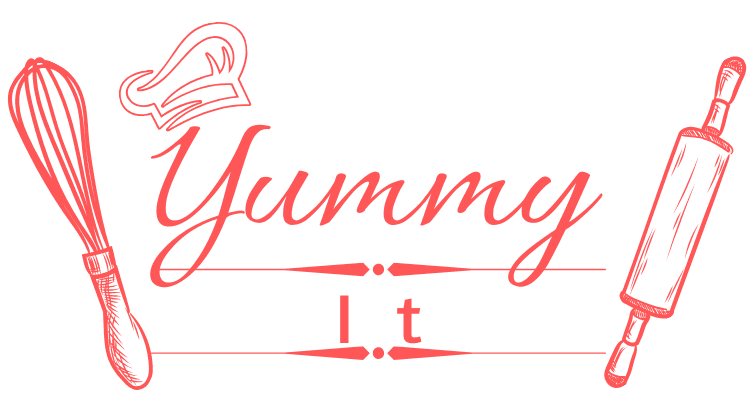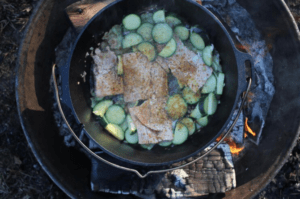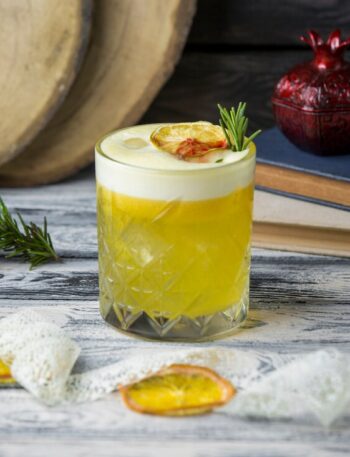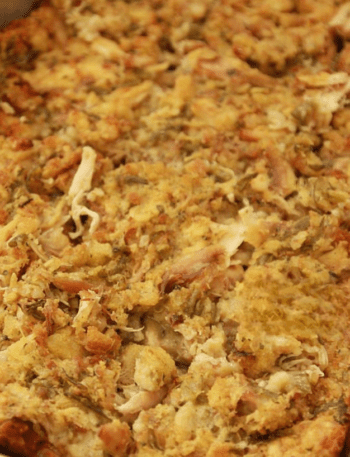Backpacking is an incredible way to connect with nature, challenge yourself physically, and experience the beauty of the outdoors. However, planning your meals for a multi-day hike can feel like a logistical puzzle. The right backpacking recipes will not only keep you energized but also make your adventure more enjoyable by giving you a taste of comfort amidst the wilderness.
In this comprehensive guide, you’ll learn how to craft lightweight, nutritious, and delicious meals that fuel your adventures without weighing you down. We’ll cover the basics of backpacking nutrition, gear essentials, meal ideas, and advanced tips for meal planning.
Why Nutrition is Critical on the Trail
Backpacking places significant physical demands on your body, especially if you’re hiking long distances, climbing steep elevations, or carrying a heavy pack. Proper nutrition ensures you maintain energy levels, recover quickly, and stay mentally sharp throughout your journey.
Nutritional Considerations for Backpacking
- Calories
Backpackers burn between 2,500 and 4,500 calories a day, depending on the intensity of their hike and individual metabolism. Your meals should pack a high calorie-to-weight ratio to fuel you without adding unnecessary bulk to your pack.Examples:- Trail mix with nuts and dried fruits.
- Nut butter packets (rich in calories and fats).
- Dehydrated meals with calorie-dense ingredients like pasta and quinoa.
- Macronutrients
Balancing your intake of carbohydrates, proteins, and fats is essential:- Carbohydrates provide quick energy. Opt for instant rice, couscous, or granola.
- Proteins help repair muscles. Include jerky, lentils, and powdered protein.
- Fats provide long-lasting energy. Bring nuts, cheese, and powdered coconut milk.
- Hydration
Hiking can dehydrate you quickly. Bring enough water or have tools for purification (like filters or tablets). Add powdered electrolytes to your water to replenish lost minerals.
For more details, check out REI’s Backpacking Nutrition Basics.
Types of Backpacking Meals
Choosing the right types of meals for your trip depends on factors like duration, climate, and your cooking setup. Backpacking meals generally fall into three categories: dehydrated, freeze-dried, and no-cook options.
1. Dehydrated Meals
Dehydrated meals are a go-to for backpackers because they’re lightweight, compact, and long-lasting. You can buy pre-made versions or dehydrate your own meals at home using a dehydrator or oven.
Key Benefits:
- Lightweight and easy to pack.
- Customizable with homemade recipes.
- Affordable compared to freeze-dried alternatives.
Examples:
- Dehydrated Risotto: Combine arborio rice, powdered broth, and dehydrated vegetables. Add boiling water, stir, and enjoy.
- Vegetable Soup: Mix dehydrated carrots, celery, potatoes, and seasoning packets for a warm, hearty soup.
2. Freeze-Dried Meals For Backpacking Recipes
Freeze-dried meals retain more flavor and nutrients than dehydrated options. They also rehydrate faster, making them ideal for those who want quick, delicious meals after a long day of hiking.
Key Benefits:
- Superior flavor and texture.
- Easy to prepare—just add boiling water.
- Long shelf life (ideal for emergency stockpiles too).
Examples:
- Freeze-Dried Beef Stroganoff: Rehydrate with hot water and enjoy a creamy, protein-packed dinner.
- Thai Peanut Curry: Mix freeze-dried vegetables, powdered coconut milk, and rice for a satisfying meal.
3. No-Cook Meals
For ultralight backpacking or days when cooking feels like a hassle, no-cook meals are a lifesaver. These meals save time, reduce the need for bulky stoves, and eliminate cleanup.
Key Benefits:
- No cooking equipment needed.
- Quick and convenient.
- Minimal preparation and cleanup.
Examples:
- Tortilla Wraps: Spread peanut butter or hummus on a tortilla, add dried fruits or freeze-dried veggies, and roll up for a nutritious meal.
- Trail Mix: Combine nuts, seeds, dried fruits, and dark chocolate for a calorie-dense snack.
For more ideas, visit Fresh Off the Grid’s Backpacking Recipes.
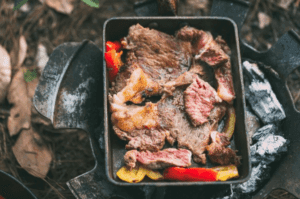
Essential Backpacking Cooking Gear
Even the best backpacking recipes require the right tools. The key is to pack lightweight, durable, and multi-functional gear that serves multiple purposes.
1. Cooking Stoves
Stoves are essential unless you’re relying on no-cook meals. Choose a stove based on the trip duration and your weight preferences:
- Canister Stoves: Lightweight and efficient. Great for boiling water quickly. Examples: Jetboil, MSR PocketRocket.
- Alcohol Stoves: Ultralight and budget-friendly but require more time to heat.
- Wood-Burning Stoves: Ideal for off-grid camping but dependent on finding dry wood.
2. Cookware
Invest in compact cookware that’s easy to clean and pack.
- Lightweight Pots: Titanium or aluminum options are popular.
- Spork or Utensils: Opt for multi-use utensils to save space.
3. Food Storage
Keeping food fresh and secure is critical:
- Bear Canisters: Required in certain areas to protect food from wildlife.
- Waterproof Bags: Protect food from moisture and spills.
Sample Backpacking Recipes for Every Meal
Breakfast (Start Your Day Right)
Breakfast is vital for fueling your morning hike. These options are easy to prepare and packed with energy.
- Apple Cinnamon Quinoa Porridge
- Combine quinoa flakes, powdered milk, dried apples, and cinnamon.
- Add boiling water and stir until thickened.
- Granola with Milk and Berries
- Pack granola, powdered milk, and freeze-dried berries in a resealable bag.
- Add water (hot or cold) for an instant breakfast.
Lunch (Quick and Energizing)
Lunches on the trail should be simple, portable, and calorie-dense.
- Tuna Salad Wraps
- Use single-serve tuna pouches and mayonnaise packets.
- Spread on a tortilla and add dehydrated veggies.
- Hummus Pitas with Sun-Dried Tomatoes
- Mix powdered hummus with water and spread on pita bread.
- Top with sun-dried tomatoes and crushed nuts.
- For more ideas about healthy lunch check our Sub in a Tube link
Dinner (Hearty and Warm)
Dinner is a chance to replenish your body after a long day. These recipes are filling and flavorful:
- Red Lentil Chili
- Combine red lentils, chili spices, tomato bouillon powder, and dehydrated vegetables.
- Simmer with boiling water until thickened.
- Thai Peanut Noodles
- Use rice noodles, powdered peanut butter, soy sauce packets, and chili flakes.
- Add hot water, stir, and let sit until the noodles soften.
Snacks (On-the-Go Energy Boosts)
Snacks keep your energy up between meals.
- Trail Mix Variations: Mix nuts, seeds, dried mango, and chocolate chips.
- Energy Balls: Combine oats, honey, peanut butter, and protein powder. Roll into small balls for easy snacking.
Dehydrating Your Own Backpacking Meals
Dehydrating your meals at home is a budget-friendly way to prepare trail food. It gives you complete control over flavors and ingredients.
Why DIY Dehydration?
- Cost-Effective: Cheaper than buying commercial freeze-dried meals.
- Customizable: Tailor meals to your dietary needs and preferences.
- Compact: Remove moisture to reduce weight and bulk.
How to Dehydrate Foods
- Cook the Meal: Examples: pasta dishes, soups, or stir-fries.
- Dehydrate: Use a dehydrator or oven at a low temperature to remove moisture.
- Store: Pack dehydrated food in vacuum-sealed bags to preserve freshness.

Advanced Meal Planning Tips (backpacking recipes)
FAQs: Backpacking Recipes
How do I calculate the right amount of food?
Packing the right amount of food is essential to avoid carrying excess weight while ensuring you have enough energy for your trip. A general rule is to bring 1.5–2 pounds of food per person per day, which translates to roughly 2,500–4,500 calories depending on your activity level, body size, and the difficulty of the terrain.
Here’s a breakdown of what this looks like:
- Breakfast: Around 600–800 calories for a strong start.
- Lunch: About 700–900 calories for sustained energy.
- Dinner: 800–1,200 calories to replenish your body after a long day.
- Snacks: 400–800 calories spread throughout the day.
If you’re embarking on a multi-day hike, plan meals to vary slightly day-to-day to avoid monotony while still meeting your caloric needs. Keep in mind that higher altitudes and colder temperatures may require more food to compensate for increased energy expenditure.
Can I prepare no-cook meals?
Absolutely! No-cook meals are perfect for reducing weight and effort. They save you time, especially during lunch breaks or when you’re too tired to set up your cooking gear. Here are some excellent no-cook ideas:
- Cold-Soaked Oatmeal: Pack rolled oats, powdered milk, and dried fruits in a resealable bag. Add water and let it sit for 20–30 minutes while you set up camp or take a rest.
- Tortilla Wraps: Fill tortillas with peanut butter, honey, or a mixture of hummus and freeze-dried veggies. Tortillas are lightweight and versatile, making them a backpacking favorite.
- Trail Mix: Combine nuts, seeds, chocolate, and dried fruits for a nutrient-packed, easy-to-grab snack.
No-cook meals are particularly handy for ultralight backpackers or those tackling long days with limited time for meal preparation. Just ensure you pack enough water to rehydrate certain ingredients and keep yourself hydrated throughout the day.
